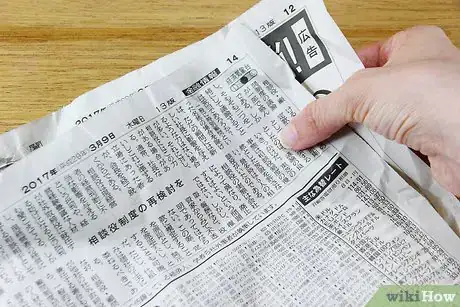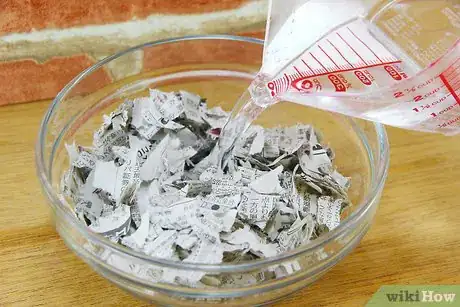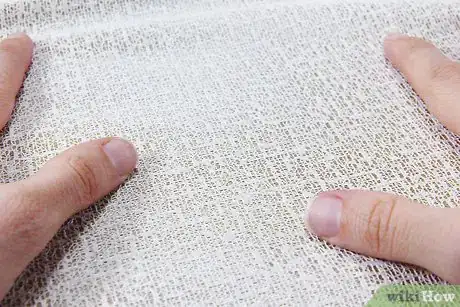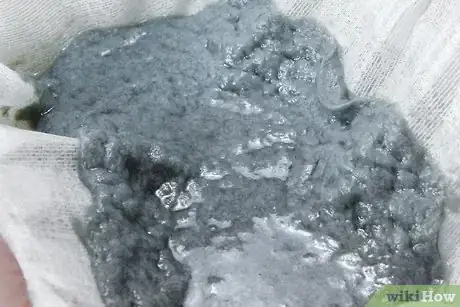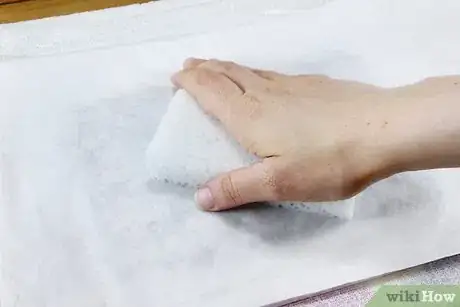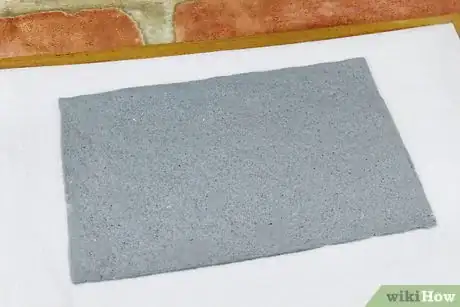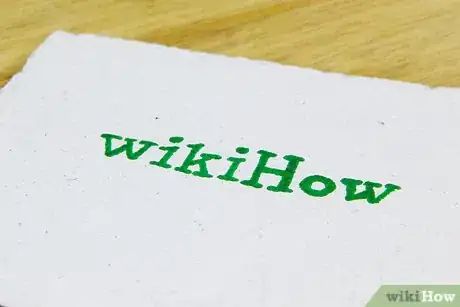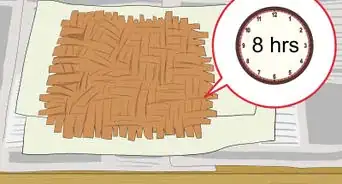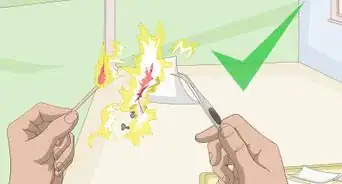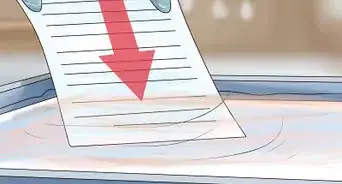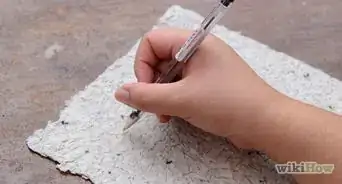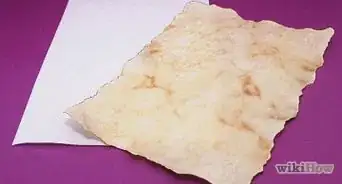wikiHow is a “wiki,” similar to Wikipedia, which means that many of our articles are co-written by multiple authors. To create this article, 18 people, some anonymous, worked to edit and improve it over time.
There are 7 references cited in this article, which can be found at the bottom of the page.
This article has been viewed 134,019 times.
Learn more...
You can make your own recycled paper at home by pulping and drying scraps of used paper. "Recycling" is simply the act of transfiguring and re-purposing something to avoid throwing it away. Odds are that you have most of the materials lying around your home – and that the process is easier than you think!
Steps
Pulping the Paper
-
1Gather used paper. The texture and color of the old paper that you repurpose will directly inform the quality of the "finished" recycled paper. You can use printer paper, newspaper, (clean) napkins and tissues, photocopier paper, wrapping paper, brown paper, lined paper, and even old envelopes.[1] Remember: the paper will shrink and contract through the soaking and drying process, so you will need to find much more scrap paper than the amount of recycled paper that you want to create.
- As a general rule of thumb, 4-5 sheets of newspaper should produce two small sheets of recycled paper.[2] This ratio may vary depending on the type and thickness of the paper that you pulp.
- If you want your recycled paper to be "plain" with a consistent color, be mindful of the variety of scraps that you use. If you use mostly white paper scraps, for instance, your finished product will more closely resemble a standard piece of printer paper.
-
2Shred the paper. Rip up your paper scraps into small, fairly equally-sized pieces – the finer, the better. If the pieces are large, then the finished product will be jumbled and chunky. Try putting the pages through a shredder, then grinding or ripping the shredded pieces into even smaller bits.[3]Advertisement
-
3Soak the shredded paper. Place the finely ground-up scraps into a dish or a pan, and fill the container with hot water. Stir the mixture to ensure that all of the paper is thoroughly soaked. Leave the paper to stew for a few hours, stirring occasionally.
- Consider adding a few tablespoons of cornstarch after a few hours to firm up the consistency. This step is not mandatory, although some recycled paper crafters swear by it. If you add cornstarch, stir it thoroughly into the mix, and add a bit of hot water to aid the soaking.[4]
-
4Blend the soggy paper mixture. After a few hours, place two or three handfuls of the soggy paper mixture into the blender. Fill the blender about half-full with water. Turn on the blender in short bursts to break up the paper into mush. When the paper is ready to use, it will have the mushy texture of cooked oatmeal.[5]
- If you don't own a blender, then shredding and soaking should suffice. However, this added act of mechanical pulping will make your finished product much smoother.
Straining the Paper
-
1Procure a screen. You will use this device to strain the wet pulp, filtering the water from the clumps of paper. When the paper mush dries onto the screen, it will gradually congeal into recycled paper. Thus, the dimensions of the screen must match the size of the paper sheet that you want to create. A cut-out piece of window screen is ideal here – roughly 8 inches by 12 inches, or as large as you like.
- Try to fit a border around the screen to hold in the pulp. An old wooden picture frame will do, but you can also glue or staple thin pieces of wood around the outside of the screen to make your own "frame."
- If the screen is made from metal, be sure that it is not rusty. The rust may stain your paper.
-
2Fill a pan with pulp. Use a dishpan, a baking pan, or a wide, shallow bucket. It should be at least 4-6 inches deep. Pour the pulp into the pan until it is about halfway full. Then, add water until the mixture is 3-4 inches deep. The pan should be mostly full, but not so much that the addition of the screen will make the pulp-and-water mixture spill over.[6]
-
3Lay the window screen into the pan. Slide it into the bottom of the pan so that it lays beneath all of the water and pulp. Gently slide the screen back and forth through the mixture to break up any clumps. Then, lift the screen straight up. The pulp should be spread evenly in a thin layer on top of the screen.
- Alternately: lay the screen into the bottom of the pan before you add the water and pulp. Then, pour the paper pulp over the screen. When you lift the screen out of the water, it should still sift out the pulp from the liquid.
-
4Put the screen on a towel to drain. Make sure that the paper-side of the screen is facing up and away from the towel. The sifting process alone will not strain out all of the moisture. The pulp will still need at least another hour to drain. Leave it to dry, and do not disturb it.
Pressing the Paper
-
1Squeeze out the excess water. After an hour has passed, lay a piece of sheet or another thin fabric on top of the pulp on the screen. Then, press down firmly on the sheet with a dry sponge to squeeze out all the excess water from the paper pulp. The goal is to transfer the paper from the screen to this sheet. The sheet should be flat, clean, dry, and unwrinkled so that it is a suitable mold for your paper.[7]
-
2Lift the screen and turn it over. The paper should release onto the sheet. Lay it on a flat surface to dry overnight, or for a few hours at minimum. Keep it in a warm, dry place.
- Try not to place the drying paper under direct heat, or very close to a powerful heating source. This might cause the paper to crinkle and dry unevenly.
-
3Peel the paper from the sheet. When the paper pulp is dry, carefully peel it away from the cloth. You should now have a sheet of dry, firmly-pressed, functional paper! If it works, you can use the same equipment to produce as much recycled paper as you like.
-
4Test it out. Write on the paper with pencil and pen to gauge its quality. Figure out whether it is absorbent enough; whether it is clear enough to see the words; and whether it will hold up as a durable and passable sheet of paper. If you plan to make more paper, take notes on this batch so that you can improve your product next time.
- If the paper grit is too rough, it's probably because you didn't grind up the pulp finely enough. If it's falling apart, then you may not have used enough water to bind the paper fibers together.
- If the paper is too colorful (to the point that it's difficult to see the words that you write,) then you may need to use more consistently-colored source paper. Try using all white paper next time.
Expert Q&A
-
QuestionIs recycling paper beneficial?
 Kathryn KelloggKathryn Kellogg is the founder of goingzerowaste.com, a lifestyle website dedicated to breaking eco-friendly living down into a simple step-by-step process with lots of positivity and love. She's the author of 101 Ways to Go Zero Waste and spokesperson for plastic-free living for National Geographic.
Kathryn KelloggKathryn Kellogg is the founder of goingzerowaste.com, a lifestyle website dedicated to breaking eco-friendly living down into a simple step-by-step process with lots of positivity and love. She's the author of 101 Ways to Go Zero Waste and spokesperson for plastic-free living for National Geographic.
Sustainability Specialist Yes, for sure! Recycling paper really saves trees and resources. That said, whenever possible, try focusing on reducing your paper usage still, so you can make an even greater impact on the planet.
Yes, for sure! Recycling paper really saves trees and resources. That said, whenever possible, try focusing on reducing your paper usage still, so you can make an even greater impact on the planet. -
QuestionCan I use cardboard for this project?
 Community AnswerYes; any paper fiber will work. Be sure to mix it thoroughly to break it down in the pulp stage.
Community AnswerYes; any paper fiber will work. Be sure to mix it thoroughly to break it down in the pulp stage. -
QuestionHow will I fit the canvas in the pan?Most plastic containers are a standard size. A foil roasting pan can give the depth and a little more room to place the screen for making paper. Anything larger will incur significant expense.
Things You'll Need
- Old clean newspaper or other waste paper
- Water
- Dishpan
- Electric blender
- Non-rusty metal screen with the dimensions of the paper you want to make
- Old towel
- 30 centimeter (11.8 in) x 30 cm (12 in. x 12 in.) piece of old bedsheet
- Dry sponge
References
- ↑ http://www.motherearthnews.com/diy/making-paper-zmaz93djzraw.aspx
- ↑ http://pbskids.org/zoom/activities/sci/recyclingpaper.html
- ↑ http://www.earth911.com/living-well-being/events-entertainement/recycle-your-own-paper/
- ↑ http://pioneerthinking.com/crafts/makingpaper
- ↑ https://blog.etsy.com/en/2007/how-to-make-paper-from-recycled-materials/
- ↑ https://www.nwf.org/How-to-Help/Live-Green/Reduce-Reuse-Recycle/Paper/Make-Paper.aspx
- ↑ http://www.make-stuff.com/recycling/paper.html
About This Article
To make recycled paper, shred used paper into the smallest pieces you can, then soak them in hot water. After a few hours, pour the pulp into a baking pan, slide a cut-out piece of window screen into the bottom of the pan, under the pulp, and lift the screen out. Put it on a towel to drain for an hour, then lay a piece of thin fabric on top of the layer of pulp and use a dry sponge to drain excess moisture. Turn the screen over to release the paper, then let it dry overnight. To learn how adding cornstarch can improve the texture of your paper, keep reading!
